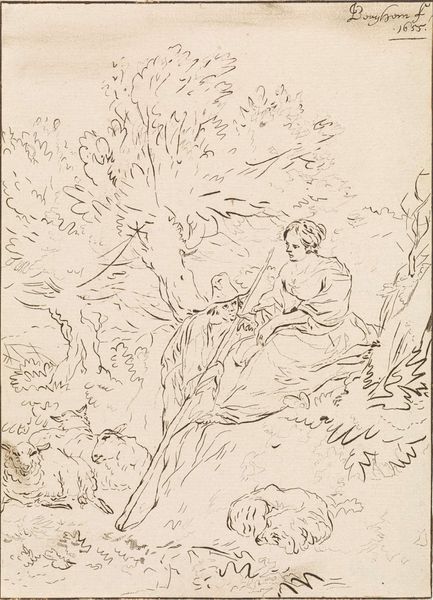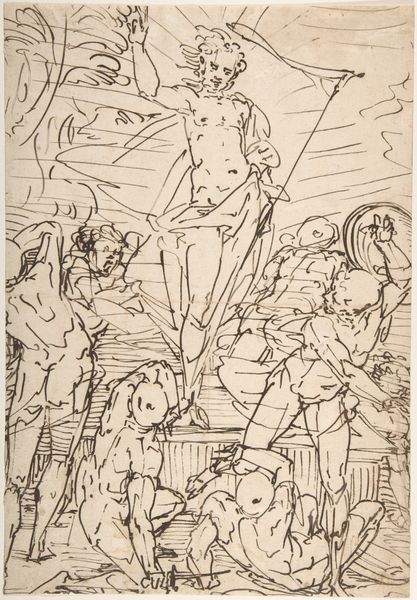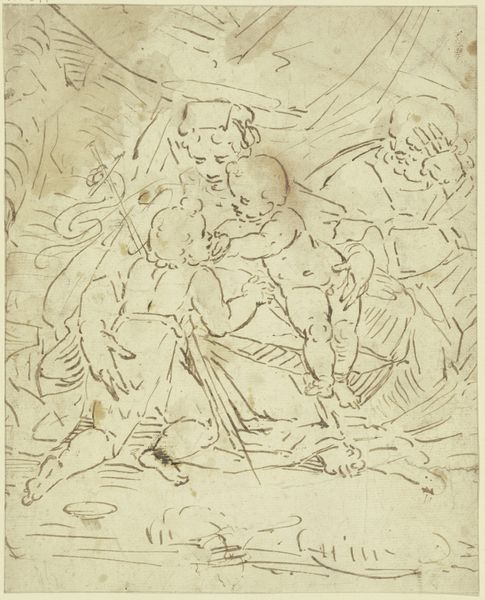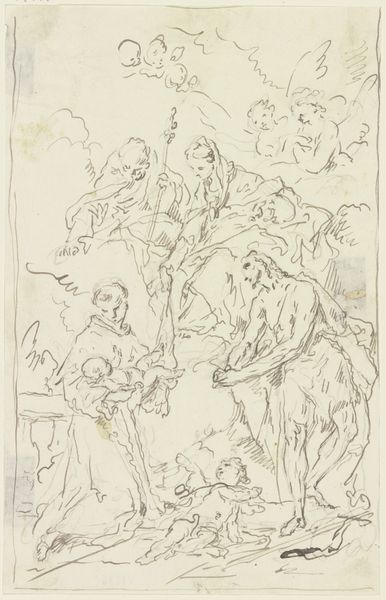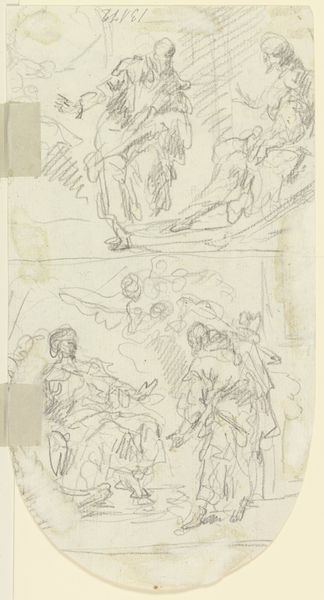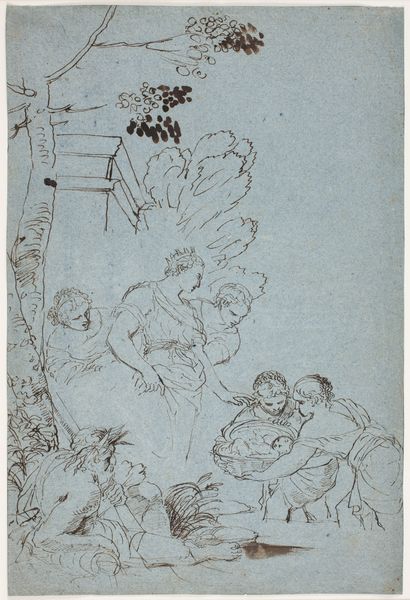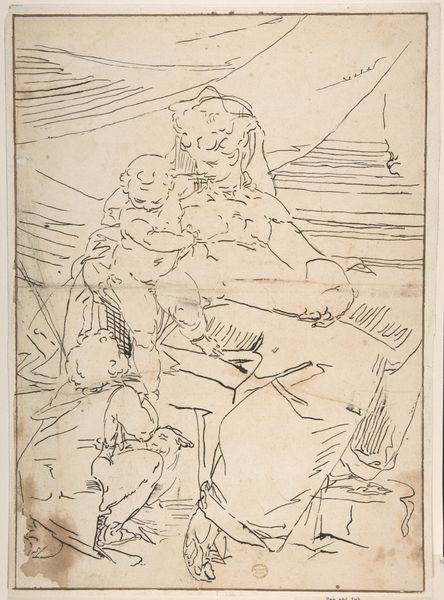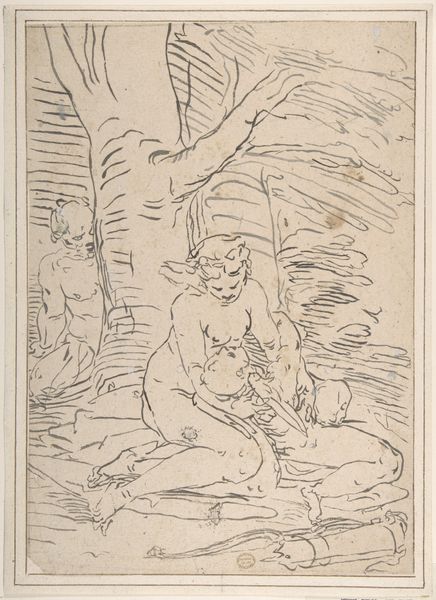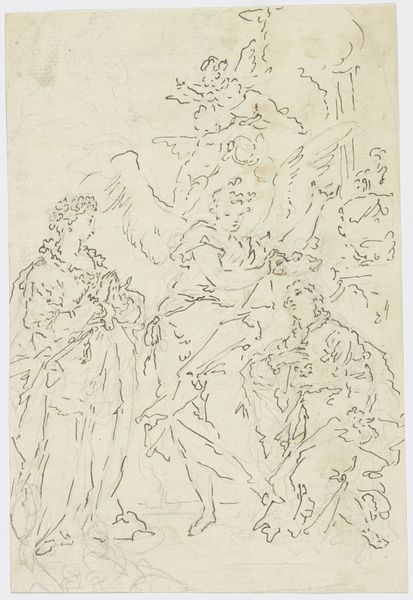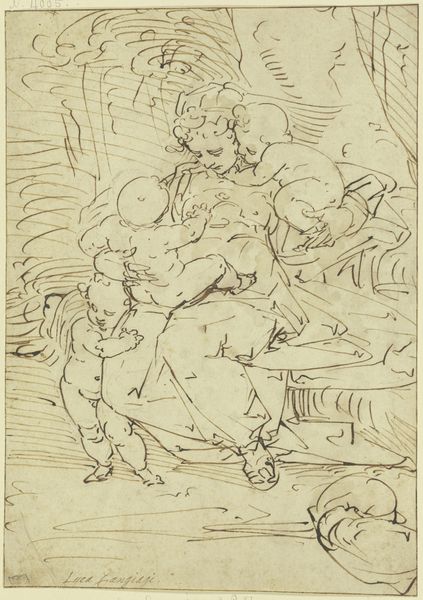
Dimensions: height 159 mm, width 134 mm
Copyright: Rijks Museum: Open Domain
Curator: Here we have "Four Putti by a Vase," a drawing rendered in ink by Bernhard Schreuder, created sometime between 1767 and 1780. It’s currently held in the collection of the Rijksmuseum. What are your first thoughts? Editor: It strikes me as a flurry of playful energy contained within a very structured scene. The light sketchiness almost undermines the established genre scene. I wonder if there’s a tension at play here, the tension of childhood? Curator: Definitely playful, but I am struck by how this image calls on and reinterprets classical motifs through a contemporary lens. Putti, cherubic figures, have long been deployed in Western art to symbolize innocence, love, and even divine intervention. Consider how the vase itself acts as a focal point; it could represent an urn or a vessel holding symbolic promise of life and afterlife. Editor: You know, observing the political and social dynamics of 18th-century Europe makes one ask: who gets access to this ‘divine intervention,’ this innocence? Art like this was almost certainly designed for the enjoyment and cultivation of wealthy patrons. Even these cherubic figures reflect a very specific, gendered standard of beauty and, therefore, worth. Curator: Of course. Yet, there’s also something timeless in how it captures human aspiration. Look at the interaction of the figures around the vase, an action frozen for eternity. Their arrangement—some leaning in with curiosity, others with arms reaching forward—feels deliberately composed, each with unique features, echoing universal desires. Editor: I appreciate the compositional elements, but am also drawn to the act of erasure implicit in the rendering, in the open and easily adaptable narrative—we, today, have a role in completing the drawing, interpreting what that vessel truly symbolizes. Maybe hope for the future or the status quo? What will their work produce? Curator: It's the Baroque sensibility rendered accessible through the medium of ink on paper. As with any symbolic visual form, our perception relies on understanding cultural continuity in an ever-changing present. Editor: Yes, and this piece stands as a vital conduit connecting the sensibilities of its time with urgent dialogues concerning equity, beauty standards, and class consciousness still resonating loudly today.
Comments
No comments
Be the first to comment and join the conversation on the ultimate creative platform.

